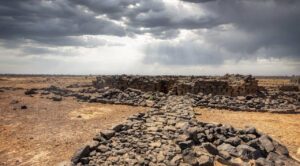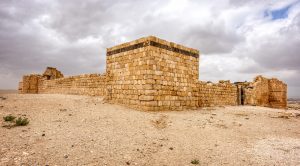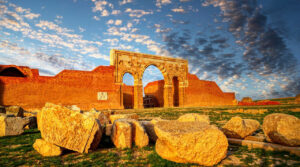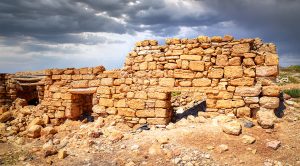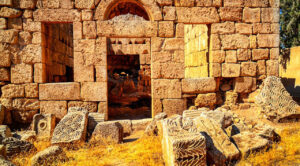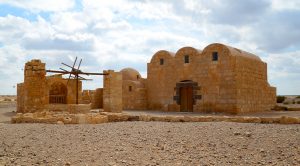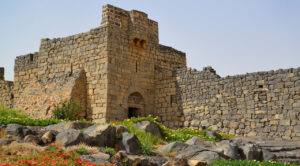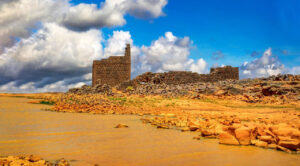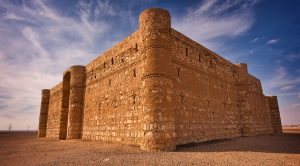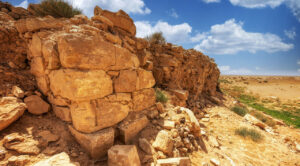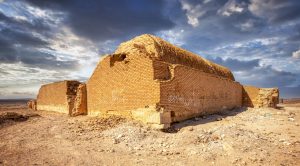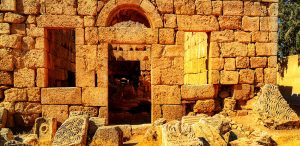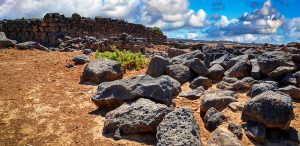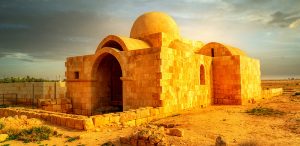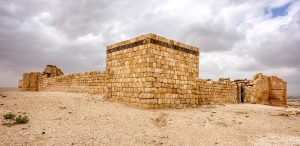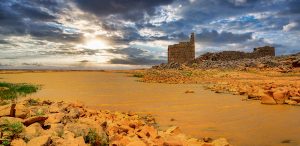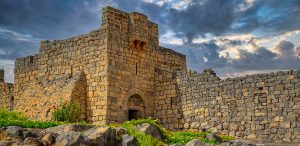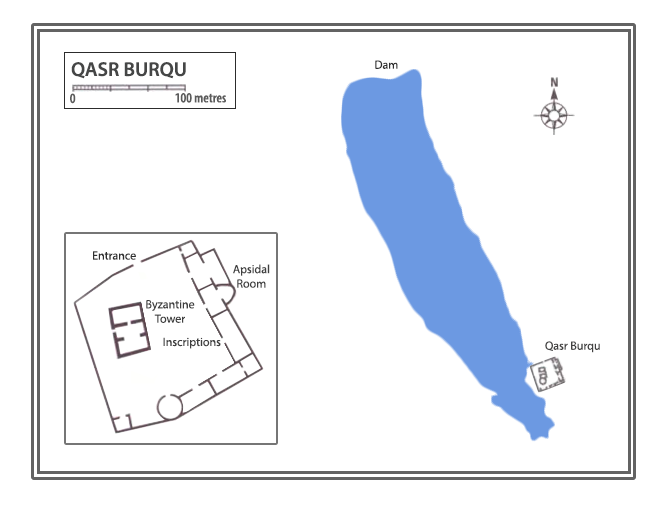One of the most magnificent and at the same time difficult to reach sites, Qasr Burqu lies in the middle of the Eastern Desert by the lake in the far-east part of Jordan, 80 km from the Iraqi border. Access to this rarely visited but the completely worthwhile site requires a four-wheel-drive vehicle and a guide who can be hired at Muqat where the sign to the palace is or from Ruweished, 10 km further. A 21 km off-road trip northwest across sand flats and Wadis is not too bad and takes about 40-50 minutes.
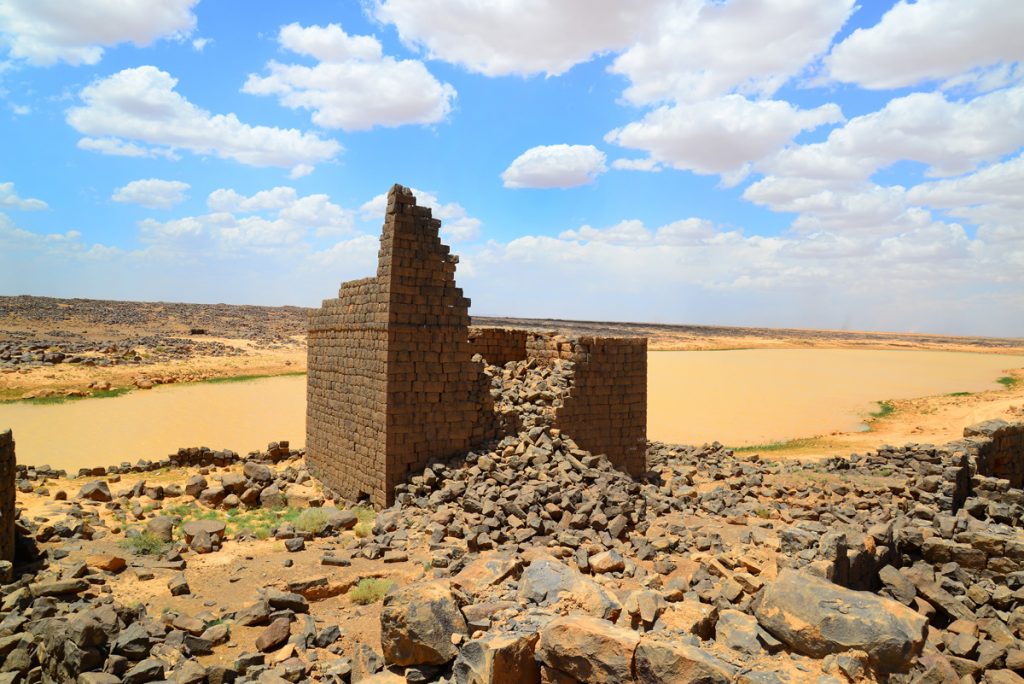
The apparent incongruity of the lake in the harsh desert makes this place very special and for this particular reason, The Royal Society for the Conservation of Nature (RSCN) has been fighting to establish Burqu as a protective reserve, which would fit nicely its plans to develop tourism in this region.
An ancient dam constructed by the Romans in the 3rd century to secure water for caravans heading between Syria and Arabia is the reason for the lake’s existence. It is home to several bird species including finches, storks, larks, eagles and vultures. The harshness of the surrounding landscape and the lack of properly grated roads have acted as a strong deterrent against poaching. The area also has all the makings of a successful wildlife preserve, as it’s already home to gazelles, desert hares, foxes, hyenas and even caracals.
Spring is the best time to visit Qasr Burqu when the water laps at the foot of the front walls, poppies and iris are blooming among the wormwood and birds congregate, attracted by the water. The longest room of the Qasr on the northeast side has several inscriptions. The small apsidal room on the left with a pointed arch has niches left and right. It may have been the reception hall, although there is also some speculation that it was a chapel.
A cross decorates the lintel of the circular room on the southwest which is not bonded into the wall and may represent an earlier building phase. This room also has engaged pilasters on two sides.
Between it and the tower in the courtyard is a cistern: the tower is an earlier building and more finely constructed. A very small door on the southwest side is now blocked; this lends credence to the theory that the tower was the first structure built since the small entrance was easier to defend in an isolated watch-tower.
Scramble up the sides to look in – there are three ground floor rooms of which not much beyond an arch is now visible. The wall still stands 8m high and there were probably three storeys of rooms.
Along with Qasr Tuba, Burqu is one of my favourite ancient ruins to visit in Jordan and I certainly recommend including it in your travel plan.
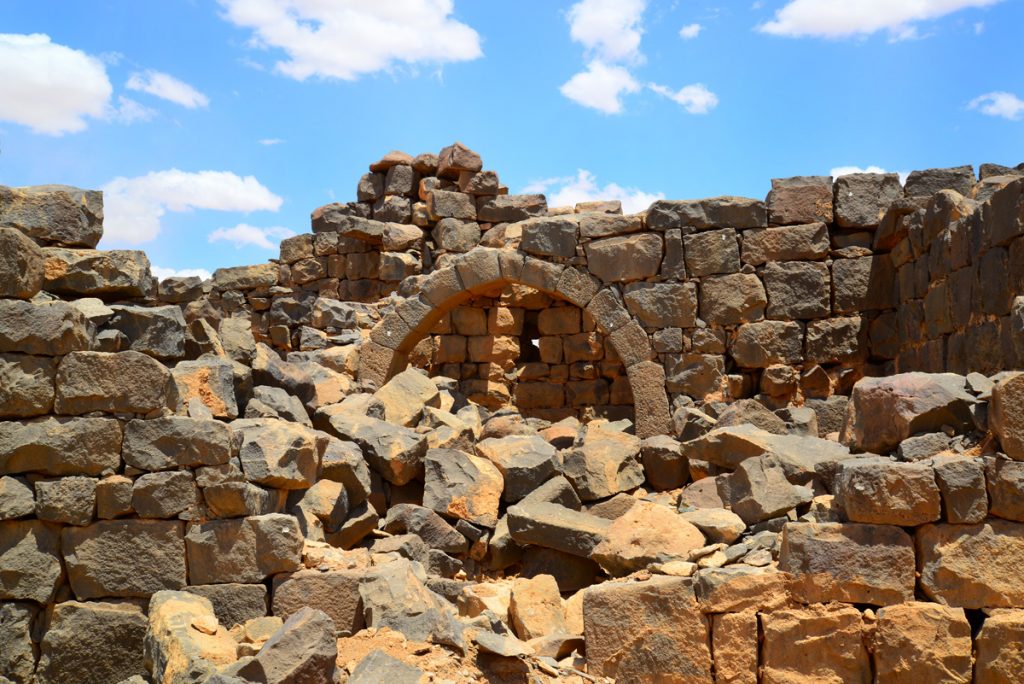
A Greek inscription found here, now in a Chicago museum, is dated to the 3rd century. Arabic inscriptions dating to 700, 1380 and 1409 have also been found. On this evidence, it is thought that the tower may have been built in the 3rd century and the larger enclosure added in the Umayyad era.
On the northeast side, the longest room bears an inscription on the lintel which dates it to 700: “Oh God! Bismillah”. This is what Amir Al-Walid, son of the commander of the faithful, built: these rooms. Walid was later to become caliph – this mention is an example of continuing Umayyad involvement in the region. A second scrawled inscription above this, dated 1409, says that Haroun read the Kufic inscription.

